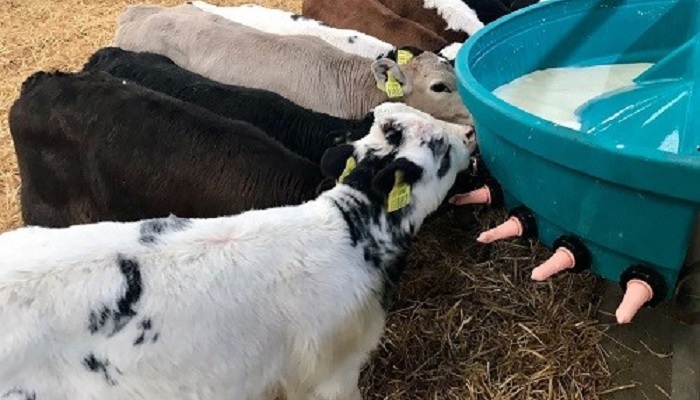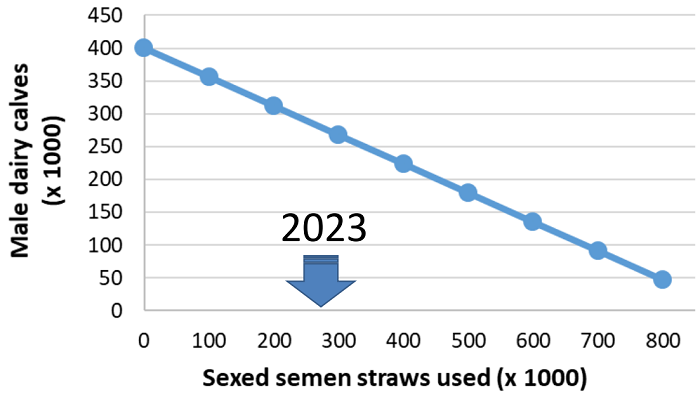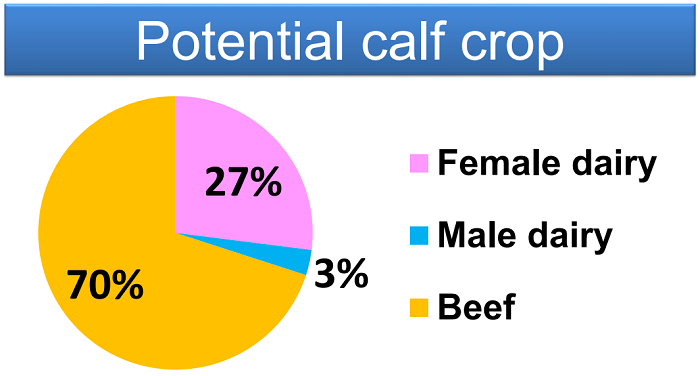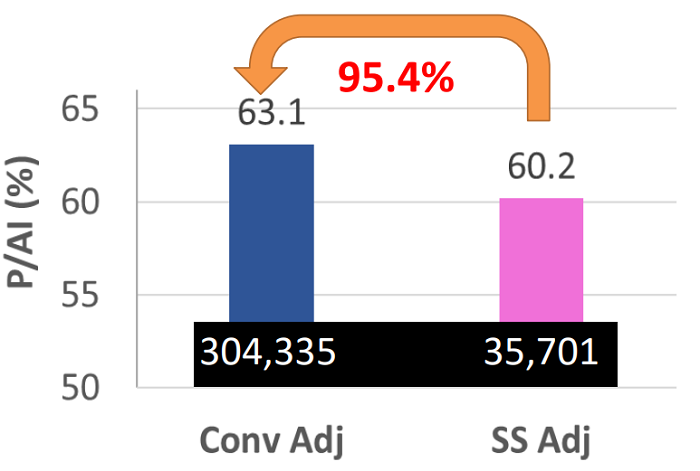10 July 2023
More beef-sired calves from the dairy herd with sexed semen

The use of sexed semen to produce the next generation of dairy replacement heifers is a technology being embraced by many Irish dairy farmers.
Along with increasing the levels of genetic gain, as females with the highest Economic Breeding Index (EBI) are often selected for its use, it can also substantially reduce the number of dairy-bred male calves emanating from the dairy herd.
As part of the Moorepark Dairy Open Day, held of July 4th, Professor Stephen Butler, Principal Research Officer in Reproductive Physiology, gave an overview of its usage and performance on Irish farms.
He explained: “Sexed semen will allow you to maximise the gains you can achieve in your herd from both the EBI and Dairy Beef Index (DBI). From a management perspective, your ability to pick and choose which dams you get a replacement heifer from is going to be a huge advantage.”
Growth in sexed semen usage
Following a field trial in 2013, sexed semen was introduced as a ‘revolutionary technology for dairy cattle breeding’ at the 2017 Moorepark Open Day. In the intervening period, it has gone from a concept to a technology shaping the future face of the dairy industry, helped largely by the establishment of two sexed semen sorting labs on Irish soil.
“In the 2023 breeding season,” Stephen said, “between 250,000 and 300,000 sexed semen straws were available for use. In terms of the journey to producing all our female dairy calves from sexed semen, we are about one-third of the way there at the moment, which is really fantastic progress in short period of time. It has been only two years since there has been sexed semen labs here in Ireland.”
Given the size of the Irish national dairy cow, approximately 400,000 female dairy calves are required per annum. If conventional, non-sexed semen was used to breed these replacements, it would result in about 400,000 male dairy calves.
Figure 1: Sexed semen straws used (x 1,000)

Outlining how these replacements can be produced from sexed semen, while also reducing the number of dairy-sired males, Stephen said: “To generate 400,000 female dairy calves will eventually require us to get to a level of 800,000 sexed semen straws being used every year, if all the female calves are to be generated using sexed semen.”
Impacts for a 100-cow herd
For a 100-cow herd, aiming to breed all replacements from sexed semen, Stephen commented: “The simplest thing is use two sexed semen straws for every one heifer calf you require. If you have a herd of 100 cows and you want 27 female dairy calves, you should use 54 sexed semen straws.
“Then it is high DBI semen for all the other insemination events and that includes all the repeat heats and all the animals you don’t want replacements from.
“If all of the female dairy calves are generated using sexed semen, you are going to be down to about 3% male dairy calves. When high DBI semen is used for all other inseminations, about 70% of the calf crop the following spring will be beef-cross calves.
“It is important to note that in the future, the calf crop coming from the dairy herd is going to be predominately beef calves. The dairy herd is going to be a very prominent supplier of beef in the future,” he said.
Figure 2: Potential calf crop if sexed semen was used to breed replacements and high DBI sires used for remaining inseminations

Confidence with sexed semen
Commenting on statistical analysis completed by Margaret Kelleher, ICBF, which compared the performance of 36,000 sexed and 300,000 conventional semen straws on Irish farms, Stephen said: “Farmers are targeting sexed semen more at heifers, the better EBI cows and the early-calving cows. That’s exactly what we are recommending in terms of targeting the most fertile animals in the herd.”
Given the targeted approach being used with sexed semen straws, this data underwent a statistical analysis to evaluate its performance in terms of the pregnancy rates being achieved. Positive results were obtained, with sexed semen being 95.4% as good as conventional.
Figure 3: Comparison of sexed and conventional semen performance on Irish farms

“The sexed semen on average achieved a 60% pregnancy rate. The conventional semen achieved at 63% pregnancy rate. I think it should give everyone confidence that sexed semen is now a reliable, pretty uniform product and there are lots of farmers using it,” Stephen said.
More from Moorepark ’23
Massive numbers of dairy farmers attend Teagasc Moorepark’23 Open Day
Current and future technologies to meet sustainability challenges
Results from the cow-calf contact systems study
New grass and clover genetic improvement programme launched
Precision nitrogen management – what is it and why is it required?
Becoming the 50-hour farmer – reducing workload on dairy farms
Refocus on financials – protecting the margin for 2023
AgNav – a sustainable digital platform to support farmers
Work Organisation for Farmer Health and Safety Video launched
This is Dairying Photo Competition captures generational bond
